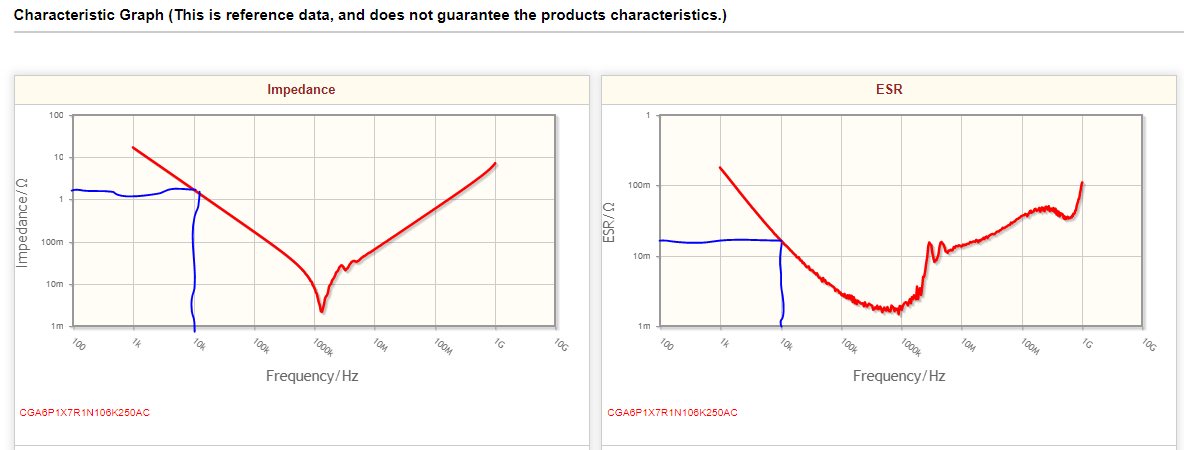Post History
One of the ceramic capacitors that I've found(link to the capacitor) specifies the following characteristics at 10 kHz: The difference in value is quite significant, almost 100 fold. Which grap...
#2: Post edited
One of the ceramic capacitors that I've found([link to the capacitor](https://product.tdk.com/en/search/capacitor/ceramic/mlcc/info?part_no=CGA6P1X7R1N106K250AC&utm_source=mlcc_automotive_general_en.pdf&utm_medium=catalog)) specifies the following characteristics:- 
- The difference in value is quite significant, almost 100 fold.
- Which graph on the picture above better represents real-world use-case?
- What is the point of specifying the ESR solely for AC loads?
- One of the ceramic capacitors that I've found([link to the capacitor](https://product.tdk.com/en/search/capacitor/ceramic/mlcc/info?part_no=CGA6P1X7R1N106K250AC&utm_source=mlcc_automotive_general_en.pdf&utm_medium=catalog)) specifies the following characteristics at 10 kHz:
- 
- The difference in value is quite significant, almost 100 fold.
- Which graph on the picture above better represents real-world use-case?
- What is the point of specifying the ESR solely for AC loads?
#1: Initial revision
Capacitor ESR vs. Impedance
One of the ceramic capacitors that I've found([link to the capacitor](https://product.tdk.com/en/search/capacitor/ceramic/mlcc/info?part_no=CGA6P1X7R1N106K250AC&utm_source=mlcc_automotive_general_en.pdf&utm_medium=catalog)) specifies the following characteristics:  The difference in value is quite significant, almost 100 fold. Which graph on the picture above better represents real-world use-case? What is the point of specifying the ESR solely for AC loads?


















